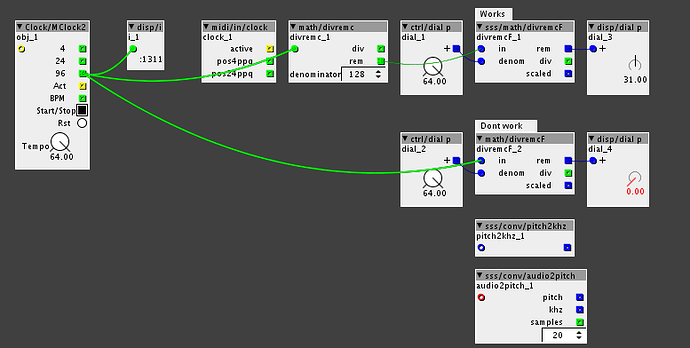NEW MODULES
PATT
"WCG12" and "WCG16"
"WCR12" and "WCR16"
"WCM12" and "WCM16"
WCG12/16 are second order weighted chance "note"-generators.(don't need to be notes, the WCG16 could very well be used for rhythmic sequences or velocity)
They will calculate the chance that particular notes/velocities/durations/octaves might follow up on two previous notes/velocities/durations/octaves.
Both modules have external inputs for overriding the "oldest" or last previous note, so multiple modules can be combined to cross-modulate each other's calculations.
As WCG12 is "normally" used to record note-chances, the note-input is wrapped between 0 and 11.
As WCG16 is "normally" used to record velocity-chances, the vel-input is clipped between 0 and 15.
WCR12/16 is used to record the chance-table using a keyboard. Connect a midi-to-cv module to the gate and note/vel inputs and play a (long) melody with your keyboard. Each time a note is played, it uses the two previous played notes to determine the position in the table and add a weight of 1 to the note that is played after this two-note-sequence.
When done, hit "send" to send the recorded chance-table to the "core" module (WCG12/16)
To reset the recorded table and start anew, hit "reset".
To alter a previous recording, hit "get". This will load the table of the core-module as if it is just recorded, so you'll be able to alter it if needed.
WCM12/16 are modules to manually change the chance-settings. The first two selectors select the two previous notes/velocities and the following small selectors set the chance of each note/velocity to follow up on this two-note/vel-sequence.
It's very useful to have this one next to the WCR12/16, as you might need to alter the chance-table manually sometimes.
For example, it might stick to minimum/maximum value. You can fix this by selecting 0 or 11/15 for the note/vel selectors and alter the chances manually to get it away from a repeating 0 or 11/15. (11 or 15, depending on whether you're using WCM12 or WCM16)
Demo patch. Also shows use of tabletrain osc, guitar synth, "morph"-tools and shimmer delay.
(though, you might need to create a 127-waveforms wavetable first)
chance pattern2.2.axp (43.3 KB)
and for people in need of making a sweet wavetable first, this patch has 3 different modules for auto-generating waveforms and a table-combinor to combine your created waveforms in a single table. Please follow instructions in the patch.
table combinor.axp (30.4 KB)





